
 (732) 246-1377
(732) 246-1377
 (732) 246-1377
(732) 246-1377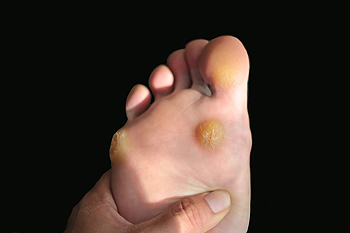 Many people will develop either a corn or callus on their foot at some point in their lives; but what are they? Corns and calluses are areas where the skin has thickened due to constant friction on the area. Corns are smaller and harder than calluses and usually develop on the toes. Calluses, meanwhile, are not usually painful compared to corns and usually occur on the bottom of the foot. Typically, either will go away if the source of friction is taken away. There are some at-home treatments that may help; however, you should consult a podiatrist first to see if they will be effective and appropriate for you. Soaking your feet can soften corns and calluses, as can moisturizers. Over-the-counter pads can help remove both but require caution in their use, as some pads contain salicylic acid—which should be avoided. Finally, one of the most important ways to prevent corns and calluses is to wear fitted and comfortable shoes that prevent friction against the area.
Many people will develop either a corn or callus on their foot at some point in their lives; but what are they? Corns and calluses are areas where the skin has thickened due to constant friction on the area. Corns are smaller and harder than calluses and usually develop on the toes. Calluses, meanwhile, are not usually painful compared to corns and usually occur on the bottom of the foot. Typically, either will go away if the source of friction is taken away. There are some at-home treatments that may help; however, you should consult a podiatrist first to see if they will be effective and appropriate for you. Soaking your feet can soften corns and calluses, as can moisturizers. Over-the-counter pads can help remove both but require caution in their use, as some pads contain salicylic acid—which should be avoided. Finally, one of the most important ways to prevent corns and calluses is to wear fitted and comfortable shoes that prevent friction against the area.
If you have any concerns regarding your feet and ankles, contact one of our podiatrists of Livingston Footcare. Our doctors will treat your foot and ankle needs.
Corns: What Are They? and How Do You Get Rid of Them?
Corns can be described as areas of the skin that have thickened to the point of becoming painful or irritating. They are often layers and layers of the skin that have become dry and rough, and are normally smaller than calluses.
Ways to Prevent Corns
There are many ways to get rid of painful corns such as wearing:
Treating Corns
Treatment of corns involves removing the dead skin that has built up in the specific area of the foot. Consult with Our doctors to determine the best treatment option for your case of corns.
If you have any questions please feel free to contact our office located in North Brunswick, NJ . We offer the newest diagnostic and treatment technologies for all your foot and ankle needs.
 Orlando City Lions midfielder Will Johnson recently suffered a lateral ankle sprain against the Columbus Crew. The injury will take him out for two to four weeks. Johnson is considered to be a good player and acts as backup captain when teammate Kaka is not in the game. Johnson is not the only injured Lions player. Defensive leader Jonathan Spector suffered a knee injury that took him off the field recently. While the Lions are considered to have good backup players, the loss is still a blow to the team. If Johnson is out for four weeks, he is expected to miss around four games.
Orlando City Lions midfielder Will Johnson recently suffered a lateral ankle sprain against the Columbus Crew. The injury will take him out for two to four weeks. Johnson is considered to be a good player and acts as backup captain when teammate Kaka is not in the game. Johnson is not the only injured Lions player. Defensive leader Jonathan Spector suffered a knee injury that took him off the field recently. While the Lions are considered to have good backup players, the loss is still a blow to the team. If Johnson is out for four weeks, he is expected to miss around four games.
Sports related foot and ankle injuries require proper treatment before players can go back to their regular routines. For more information, contact one of our podiatrists of Livingston Footcare. Our doctors can provide the care you need to keep you pain-free and on your feet.
Sports Related Foot and Ankle Injuries
Foot and ankle injuries are a common occurrence when it comes to athletes of any sport. While many athletes dismiss the initial aches and pains, the truth is that ignoring potential foot and ankle injuries can lead to serious problems. As athletes continue to place pressure and strain the area further, a mild injury can turn into something as serious as a rupture and may lead to a permanent disability. There are many factors that contribute to sports related foot and ankle injuries, which include failure to warm up properly, not providing support or wearing bad footwear. Common injuries and conditions athletes face, including:
Sports related injuries are commonly treated using the RICE method. This includes rest, applying ice to the injured area, compression and elevating the ankle. More serious sprains and injuries may require surgery, which could include arthroscopic and reconstructive surgery. Rehabilitation and therapy may also be required in order to get any recovering athlete to become fully functional again. Any unusual aches and pains an athlete sustains must be evaluated by a licensed, reputable medical professional.
If you have any questions please feel free to contact our office located in North Brunswick, NJ . We offer the newest diagnostic and treatment technologies for all your foot and ankle needs.
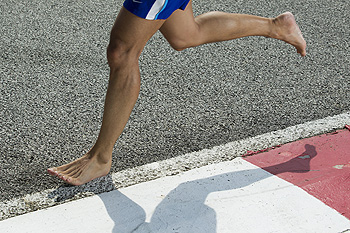 Barefoot running has increased in popularity within the last decade and has many adherents; however it may not be for you. Some physicians believe that running barefoot can pose more harm than good. Modern surfaces like concrete can be rough on feet, and broken glass is a hazard. Minimalist running shoes can be a good start for those who want to work their way up to running barefoot. While barefoot running may have its followers, it is not for everyone. Running shoes are still the go-to method for most runners and aren’t a bad choice. If you are thinking of running barefoot, be sure to check with a podiatrist to see if it is right for you.
Barefoot running has increased in popularity within the last decade and has many adherents; however it may not be for you. Some physicians believe that running barefoot can pose more harm than good. Modern surfaces like concrete can be rough on feet, and broken glass is a hazard. Minimalist running shoes can be a good start for those who want to work their way up to running barefoot. While barefoot running may have its followers, it is not for everyone. Running shoes are still the go-to method for most runners and aren’t a bad choice. If you are thinking of running barefoot, be sure to check with a podiatrist to see if it is right for you.
Barefoot running has its own share of benefits and disadvantages. If you have any concerns about your feet or ankles, contact one of our podiatrists from Livingston Footcare. Our doctors will treat your foot and ankle needs.
Barefoot Running
The Impact of Barefoot Running
The Advantages of Barefoot Running
The Drawbacks of Barefoot Running
So, what can runners do to make barefoot running safe? It’s best to make a slow transition from running shoes to barefoot running. Once the feet begin to adjust, try walking, then jogging and gradually increasing the distance. Minimalist running shoes may also be an option.
If you have any questions please feel free to contact one of our office located in North Brunswick, NJ . We offer the newest diagnostic and treatment technologies for all your foot and ankle needs.
Read more about Barefoot Running It is important that you get a proper fit for any type of athletic shoe you want to purchase. You may find it helpful to go to a specialty store that has workers who can measure your feet correctly in order to make sure your new shoes fit. Another tip is to avoid looking for the cheapest option, because cheaper shoes often equate to worse quality. When you go to a specialty store, the staff will likely ask you what activity you plan to participate in. This is because there are different types of shoes that correspond to different activities. Walking shoes should be worn if you plan on going for a walk, and running shoes should be worn if you want to go on a run.
It is important that you get a proper fit for any type of athletic shoe you want to purchase. You may find it helpful to go to a specialty store that has workers who can measure your feet correctly in order to make sure your new shoes fit. Another tip is to avoid looking for the cheapest option, because cheaper shoes often equate to worse quality. When you go to a specialty store, the staff will likely ask you what activity you plan to participate in. This is because there are different types of shoes that correspond to different activities. Walking shoes should be worn if you plan on going for a walk, and running shoes should be worn if you want to go on a run.
Finding a properly-fitting shoe is important in reducing injuries and preventing foot problems. For more information about treatment, contact one of our podiatrists from Livingston Footcare. Our doctors will treat your foot and ankle needs.
Proper Shoe Fitting
A common concern when it comes to foot health, having properly fitted shoes can help prevent injuries to the foot. Out feet affect our posture and gait, which in turn affects the biomechanics and overall bodily structure. With 33 joints, 26 bones, and over 100 ligaments, the potential for serious injury is much greater than one realizes. Although the feet cease growth in adulthood, they still change shape as they mature. Here are some factors to consider when it comes to investing in proper fitting shoes:
Keeping in mind how shoes fit the biomechanics of your body, properly-fitting shoes are vitally important. Fortunately, it is not difficult to acquire footwear that fits correctly. Be sure to wear shoes that support the overall structure of your body. Do your feet a favor and invest in several pairs of well-fitted shoes today.
If you have any questions please feel free to contact our office located in North Brunswick, NJ . We offer the newest diagnostic and treatment technologies for all your foot and ankle needs.
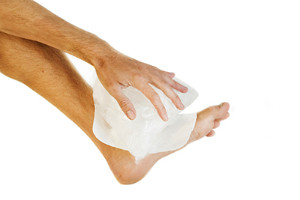 Blue Jays shortstop Troy Tulowitzki was placed on the 10-day disabled list due to a sprain in his right ankle. He suffered the injury in a game against the Angels when he collided with their first baseman, C.J. Cron, on a groundout. While Tulowitzki recently had an MRI, it was only able to show ligament damage in his ankle and not the severity of his injury. The infielder has had an underwhelming season thus far with a slash line of .250/.301/.379. In order to fill his spot on the active roster, the Jays have called up infielder Rob Refsnyder, who they recently acquired from the Yankees.
Blue Jays shortstop Troy Tulowitzki was placed on the 10-day disabled list due to a sprain in his right ankle. He suffered the injury in a game against the Angels when he collided with their first baseman, C.J. Cron, on a groundout. While Tulowitzki recently had an MRI, it was only able to show ligament damage in his ankle and not the severity of his injury. The infielder has had an underwhelming season thus far with a slash line of .250/.301/.379. In order to fill his spot on the active roster, the Jays have called up infielder Rob Refsnyder, who they recently acquired from the Yankees.
Ankle sprains are common but need immediate attention. If you need your feet checked, contact one of our podiatrists from Livingston Footcare. Our doctors can provide the care you need to keep you pain-free and on your feet.
How Does an Ankle Sprain Occur?
Ankle sprains take place when the ligaments in your ankle are torn or stretched beyond their limits. There are multiple ways that the ankle can become injured, including twisting or rolling over onto your ankle, putting undue stress on it, or causing trauma to the ankle itself.
What Are the Symptoms?
Preventing a Sprain
Treatment of a Sprain
Treatment of a sprain depends on the severity. Many times, people are told to rest and remain off their feet completely, while others are given an air cast. If the sprain is very severe, surgery may be required.
If you have suffered an ankle sprain previously, you may want to consider additional support such as a brace and regular exercises to strengthen the ankle.
If you have any questions please feel free to contact our office located in North Brunswick, NJ . We offer the newest diagnostic and treatment technologies for all your foot and ankle needs.
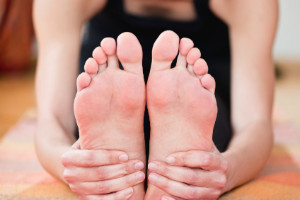 Foot problems tend to be more prevalent during the summer, and certain conditions pop up more than others. The most common foot problems for the summer are heel pain, corns, calluses, and blisters. Heel pain is usually the result of an inflamed plantar fascia, which is the long band of connective tissue that runs from the heel to the toes. Heel pain is often experienced by people who have flat feet and can be helped by offering added support in footwear. A couple of other foot issues people are faced with during the summer months are corns, calluses, and blisters. In order to prevent developing them, you should make sure you are wearing shoes that fit properly and have a lot of padding.
Foot problems tend to be more prevalent during the summer, and certain conditions pop up more than others. The most common foot problems for the summer are heel pain, corns, calluses, and blisters. Heel pain is usually the result of an inflamed plantar fascia, which is the long band of connective tissue that runs from the heel to the toes. Heel pain is often experienced by people who have flat feet and can be helped by offering added support in footwear. A couple of other foot issues people are faced with during the summer months are corns, calluses, and blisters. In order to prevent developing them, you should make sure you are wearing shoes that fit properly and have a lot of padding.
Everyday foot care is very important to prevent infection and other foot ailments. If you need your feet checked, contact one of our podiatrists from Livingston Footcare. Our doctors can provide the care you need to keep you pain-free and on your feet.
Everyday Foot Care
Often, people take care of their bodies, face and hair more so than they do for their feet. But the feet are a very important aspect of our bodies, and one that we should pay more attention to. Without our feet, we would not be able to perform most daily tasks.
It is best to check your feet regularly to make sure there are no new bruises or cuts that you may not have noticed before. For dry feet, moisturizer can easily be a remedy and can be applied as often as necessary to the affected areas. Wearing shoes that fit well can also help you maintain good foot health, as well as making it easier to walk and do daily activities without the stress or pain of ill-fitting shoes, high heels, or even flip flops. Wearing clean socks with closed shoes is important to ensure that sweat and bacteria do not accumulate within the shoe. Clean socks help to prevent Athlete’s foot, fungi problems, bad odors, and can absorb sweat.
If you have any questions please feel free to contact our office located in North Brunswick, NJ . We offer the newest diagnostic and treatment technologies for all your foot and ankle needs.
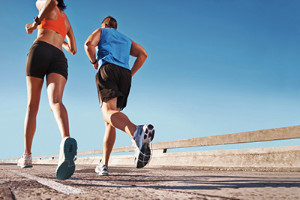 While many people love to exercise in order to become healthier, there are a lot of injuries that can occur as a result of it. Some of the most common injuries people may endure while running are plantar fasciitis, stress fractures, and sprains. Plantar fasciitis and stress fractures are usually the result of a sudden increase in workout activity. It is best to ease your way into a strenuous workout routine instead of rushing into it and putting yourself at risk for injury. Sprains occur when there is an injury to a ligament that is supposed to help maintain stability. They are best treated by the RICE method which stands for rest, ice, compression, and elevation.
While many people love to exercise in order to become healthier, there are a lot of injuries that can occur as a result of it. Some of the most common injuries people may endure while running are plantar fasciitis, stress fractures, and sprains. Plantar fasciitis and stress fractures are usually the result of a sudden increase in workout activity. It is best to ease your way into a strenuous workout routine instead of rushing into it and putting yourself at risk for injury. Sprains occur when there is an injury to a ligament that is supposed to help maintain stability. They are best treated by the RICE method which stands for rest, ice, compression, and elevation.
Exercising your feet regularly with the proper foot wear is a great way to prevent injuries. If you have any concerns about your feet, contact one of our podiatrists of Livingston Footcare. Our doctors will treat your foot and ankle needs.
How to Prevent Running Injuries
Many common running injuries are caused by overuse and overtraining. When the back of the kneecap starts wearing out and starts causing pain in your knee, this is commonly referred to as runner’s knee. Runner’s knee is a decrease in strength in your quadriceps and can occur if you’re not wearing properly fitted or supporting shoes. To prevent runner’s knee, focusing on hip strengthening is a good idea, as well as strengthening your quads to keep the kneecaps aligned.
What Are Some Causes of Running Injuries?
- One cause of a common running injury is called iliotibial band syndrome.
- Plantar fasciitis is also another common injury.
- Stress fractures can occur from overtraining, lack of calcium, or even your running style.
Best Ways to Prevent Running Injuries
- Wear footwear that fits properly and suits your running needs.
- Running shoes are the only protective gear that runners have to safeguard them from injury.
- Make a training schedule. Adding strengthening exercises as well as regular stretching can help keep you strong and limber and can lessen the possibility of injuries.
- Stretching keeps muscles limber; this will help you gain better flexibility.
If you have any questions please feel free to contact our office located in North Brunswick, NJ . We offer the newest diagnostic and treatment technologies for all your foot and ankle needs.
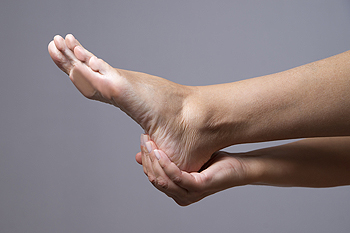 Pitcher John Lackey of the Chicago Cubs recently revealed that he has been dealing with plantar fasciitis. When asked about the condition, Lackey responded, “I think I’ll be alright. I’m 38 years old, I’m bothered by a lot of things.” The Cubs’ rotation struggles have been the story of their season, and Lackey’s 5.20 ERA has not been of much help to them this year. However, Lackey has hope for his team and believes they have what it takes to turn things around: “It’s a long season. Just stay in your approach, stay in what you do. We got a lot of talent in the room. And hopefully it works out in the end.”
Pitcher John Lackey of the Chicago Cubs recently revealed that he has been dealing with plantar fasciitis. When asked about the condition, Lackey responded, “I think I’ll be alright. I’m 38 years old, I’m bothered by a lot of things.” The Cubs’ rotation struggles have been the story of their season, and Lackey’s 5.20 ERA has not been of much help to them this year. However, Lackey has hope for his team and believes they have what it takes to turn things around: “It’s a long season. Just stay in your approach, stay in what you do. We got a lot of talent in the room. And hopefully it works out in the end.”
Plantar fasciitis can be very painful and inconvenient. If you are experiencing heel pain or symptoms of plantar fasciitis, contact one of our podiatrists from Livingston Footcare. Our doctors can provide the care you need to keep you pain-free and on your feet.
What Is Plantar Fasciitis?
Plantar fasciitis is the inflammation of the thick band of tissue that runs along the bottom of your foot, known as the plantar fascia, and causes mild to severe heel pain.
What Causes Plantar Fasciitis?
How Can It Be Treated?
While very treatable, plantar fasciitis is definitely not something that should be ignored. Especially in severe cases, speaking to your doctor right away is highly recommended to avoid complications and severe heel pain. Your podiatrist can work with you to provide the appropriate treatment options tailored to your condition.
If you have any questions please feel free to contact our office located in North Brunswick, NJ . We offer the newest diagnostic and treatment technologies for all your foot and ankle needs.
 Several members of Sri Lanka’s cricket team have been revealed to be suffering from flat feet. A podiatrist was sent to the team to discover why so many of them were suffering from foot related injuries. When the doctor discovered how many of them had flat feet, the connection to the increasing amount of injuries was made. The solution to the issue, according to the podiatrist, would be to, “Get them to wear the right shoes.”
Several members of Sri Lanka’s cricket team have been revealed to be suffering from flat feet. A podiatrist was sent to the team to discover why so many of them were suffering from foot related injuries. When the doctor discovered how many of them had flat feet, the connection to the increasing amount of injuries was made. The solution to the issue, according to the podiatrist, would be to, “Get them to wear the right shoes.”
Flatfoot is a condition many people suffer from. If you have flat feet, contact one of our podiatrists from Livingston Footcare. Our doctors will treat your foot and ankle needs.
What Are Flat Feet?
Flatfoot is a condition in which the arch of the foot is depressed and the sole of the foot is almost completely in contact with the ground. About 20-30% of the population generally has flat feet because their arches never formed during growth.
Conditions & Problems:
Having flat feet makes it difficult to run or walk because of the stress placed on the ankles.
Alignment – The general alignment of your legs can be disrupted, because the ankles move inward which can cause major discomfort.
Knees – If you have complications with your knees, flat feet can be a contributor to arthritis in that area.
Symptoms
Treatment
If you are experiencing pain and stress on the foot you may weaken the posterior tibial tendon, which runs around the inside of the ankle.
If you have any questions please feel free to contact our office located in North Brunswick, NJ . We offer the newest diagnostic and treatment technologies for all your foot and ankle needs.
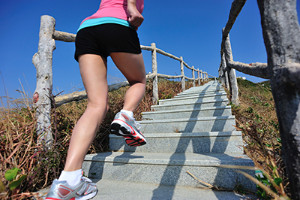 There are certain features that you should ensure your shoes have before you decide to start running. It is crucial that your shoe has arch support, cushioning, and traction in order to improve your running mechanics. The amount of support that you need in your shoe depends greatly on the arch of your foot. For example, people who have feet with high arches do not need shoes with a lot of support, since these may result in injury for them. It is important that you are aware of what type of foot arch you have so that you can find the perfect running shoe for you. Your podiatrist can help you evaluate your foot arch height as well as other factors that will help determine what running shoe you should purchase.
There are certain features that you should ensure your shoes have before you decide to start running. It is crucial that your shoe has arch support, cushioning, and traction in order to improve your running mechanics. The amount of support that you need in your shoe depends greatly on the arch of your foot. For example, people who have feet with high arches do not need shoes with a lot of support, since these may result in injury for them. It is important that you are aware of what type of foot arch you have so that you can find the perfect running shoe for you. Your podiatrist can help you evaluate your foot arch height as well as other factors that will help determine what running shoe you should purchase.
If you are a runner, wearing the right running shoe is essential. For more information, contact one of our podiatrists from Livingston Footcare. Our doctors can provide the care you need to keep you pain-free and on your feet.
Choosing the Right Running Shoe for Your Foot Type
To increase performance and avoid the risk of injury, it is important to choose the right running shoe based on your foot type. The general design of running shoes revolves around pronation, which is how the ankle rolls from outside to inside when the foot strikes the ground.
If you have any questions please feel free to contact our office located in North Brunswick, NJ . We offer the newest diagnostic and treatment technologies for all your foot and ankle needs.
 Michael Brantley of the Cleveland Indians was recently placed on the disabled list due to a sprained ankle. The outfielder suffered the injury earlier this season during a game against Kansas City and has not fully recovered from its effects. Brantley had already missed five games on paternity leave, but that wasn’t enough time for him to fully recover from the ankle injury. Fortunately, the Indians consider this to be a minor setback as Brantley is expected to be back within a week or so. While Brantley is out, the team is expected to give extra at-bats to Daniel Robertson and Austin Jackson.
Michael Brantley of the Cleveland Indians was recently placed on the disabled list due to a sprained ankle. The outfielder suffered the injury earlier this season during a game against Kansas City and has not fully recovered from its effects. Brantley had already missed five games on paternity leave, but that wasn’t enough time for him to fully recover from the ankle injury. Fortunately, the Indians consider this to be a minor setback as Brantley is expected to be back within a week or so. While Brantley is out, the team is expected to give extra at-bats to Daniel Robertson and Austin Jackson.
Ankle sprains are common but need immediate attention. If you need your feet checked, contact one of our podiatrists from Livingston Footcare. Our doctors can provide the care you need to keep you pain-free and on your feet.
How Does an Ankle Sprain Occur?
Ankle sprains take place when the ligaments in your ankle are torn or stretched beyond their limits. There are multiple ways that the ankle can become injured, including twisting or rolling over onto your ankle, putting undue stress on it, or causing trauma to the ankle itself.
What Are the Symptoms?
Preventing a Sprain
Treatment of a Sprain
Treatment of a sprain depends on the severity. Many times, people are told to rest and remain off their feet completely, while others are given an air cast. If the sprain is very severe, surgery may be required.
If you have suffered an ankle sprain previously, you may want to consider additional support such as a brace and regular exercises to strengthen the ankle.
If you have any questions please feel free to contact our office located in North Brunswick, NJ . We offer the newest diagnostic and treatment technologies for all your foot and ankle needs.
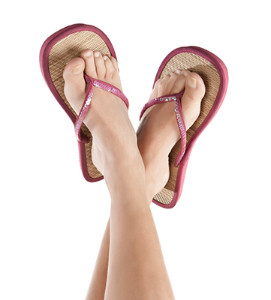 Plantar fasciitis is a common condition that tends to appear during the summer months, and flip-flops could be one of the reasons this happens. Flip-flops offer no support for the feet, which causes the plantar fascia to stretch unnaturally; this may lead to heel pain. Wearing flip-flops also causes you to scrunch your toes in order to grip the thong of the sandal, causing you to shorten your stride. As a result, you may experience hammertoes, muscle pain, and shin splits from forcing your legs to work harder.
Plantar fasciitis is a common condition that tends to appear during the summer months, and flip-flops could be one of the reasons this happens. Flip-flops offer no support for the feet, which causes the plantar fascia to stretch unnaturally; this may lead to heel pain. Wearing flip-flops also causes you to scrunch your toes in order to grip the thong of the sandal, causing you to shorten your stride. As a result, you may experience hammertoes, muscle pain, and shin splits from forcing your legs to work harder.
Flip-flops are not always the best choice of footwear. If you have any concerns about your feet or ankles, contact one of our podiatrists from Livingston Footcare. Our doctors will assist you with all of your foot and ankle needs.
Flip-Flops and Feet
When the weather starts warming up, people enjoy wearing flip-flops. Flip-flops are comfortable, stylish, and easy to slip on and off; they're perfect for any summer beach goer. However, these shoes can cause harm to the feet.
How Can Flip-Flops Affect Me Long-Term?
Are There Injuries Associated with Flip-Flops?
Yes. Since flip-flops are relatively weak and do not provide the same amount of support as sneakers, people who wear flip-flops regularly are more susceptible to injuries. On top of that, the open nature of the shoe makes your feet more prone to other problems, such as cuts and even infections. Common injuries and ailments include:
I like Wearing Flip-Flops. Are There Safe Alternatives?
When buying flip-flops, try to find ones that have sturdy soles and that are made of high-quality materials that will support for your feet. These flip-flops will cost more but will also last longer as a result.
If you have any questions please feel free to contact our office located in North Brunswick, NJ . We offer the newest diagnostic and treatment technologies for all your foot and ankle needs.
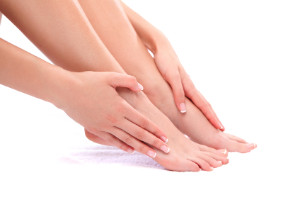 A Texas man called into his local radio station to tell a story about his experience using a gym shower while barefoot. Soon after using that shower, the man started to develop a firm itchy patch on his foot which ended up being a plantar wart. The man thought he could use at-home remedies to get rid of the wart, but he was wrong. After the virus that caused the warts had spread, he eventually decided to seek professional help from a podiatrist who concluded that the man needed to surgically remove the wart on his foot. This man’s story is a perfect example of why you should never shower in a public place barefoot.
A Texas man called into his local radio station to tell a story about his experience using a gym shower while barefoot. Soon after using that shower, the man started to develop a firm itchy patch on his foot which ended up being a plantar wart. The man thought he could use at-home remedies to get rid of the wart, but he was wrong. After the virus that caused the warts had spread, he eventually decided to seek professional help from a podiatrist who concluded that the man needed to surgically remove the wart on his foot. This man’s story is a perfect example of why you should never shower in a public place barefoot.
Plantar fasciitis can be very painful and inconvenient. If you are experiencing heel pain or symptoms of plantar fasciitis, contact one of our podiatrists from Livingston Footcare. Our doctors can provide the care you need to keep you pain-free and on your feet.
What Is Plantar Fasciitis?
Plantar fasciitis is the inflammation of the thick band of tissue that runs along the bottom of your foot, known as the plantar fascia, and causes mild to severe heel pain.
What Causes Plantar Fasciitis?
How Can It Be Treated?
While very treatable, plantar fasciitis is definitely not something that should be ignored. Especially in severe cases, speaking to your doctor right away is highly recommended to avoid complications and severe heel pain. Your podiatrist can work with you to provide the appropriate treatment options tailored to your condition.
If you have any questions please feel free to contact our office located in North Brunswick, NJ . We offer the newest diagnostic and treatment technologies for all your foot and ankle needs.
 Ole Miss recently endured a big loss when they learned their shortstop had suffered a broken foot. Shortstop Greg Kessinger is expected to miss the rest of the season with the injury. Kessinger had an x-ray on his foot which revealed the fracture, however his surgery to repair it has not been scheduled. The young shortstop suffered the injury while playing ping-pong in the players lounge at the SEC Tournament. He had been the everyday shortstop all season, hitting .175, with 2 home runs, 5 doubles and 16 RBIs.
Ole Miss recently endured a big loss when they learned their shortstop had suffered a broken foot. Shortstop Greg Kessinger is expected to miss the rest of the season with the injury. Kessinger had an x-ray on his foot which revealed the fracture, however his surgery to repair it has not been scheduled. The young shortstop suffered the injury while playing ping-pong in the players lounge at the SEC Tournament. He had been the everyday shortstop all season, hitting .175, with 2 home runs, 5 doubles and 16 RBIs.
A broken foot requires immediate medical attention and treatment. If you need your feet checked, contact one of our podiatrists from Livingston Footcare. Our doctors can provide the care you need to keep you pain-free and on your feet.
Broken Foot Causes, Symptoms, and Treatment
A broken foot is caused by one of the bones in the foot typically breaking when bended, crushed, or stretched beyond its natural capabilities. Usually the location of the fracture indicates how the break occurred, whether it was through an object, fall, or any other type of injury.
Common Symptoms of Broken Feet:
Those that suspect they have a broken foot shoot seek urgent medical attention where a medical professional could diagnose the severity.
Treatment for broken bones varies depending on the cause, severity and location. Some will require the use of splints, casts or crutches while others could even involve surgery to repair the broken bones. Personal care includes the use of ice and keeping the foot stabilized and elevated.
If you have any questions please feel free to contact our office located in North Brunswick, NJ . We offer the newest diagnostic and treatment technologies for all your foot and ankle needs.